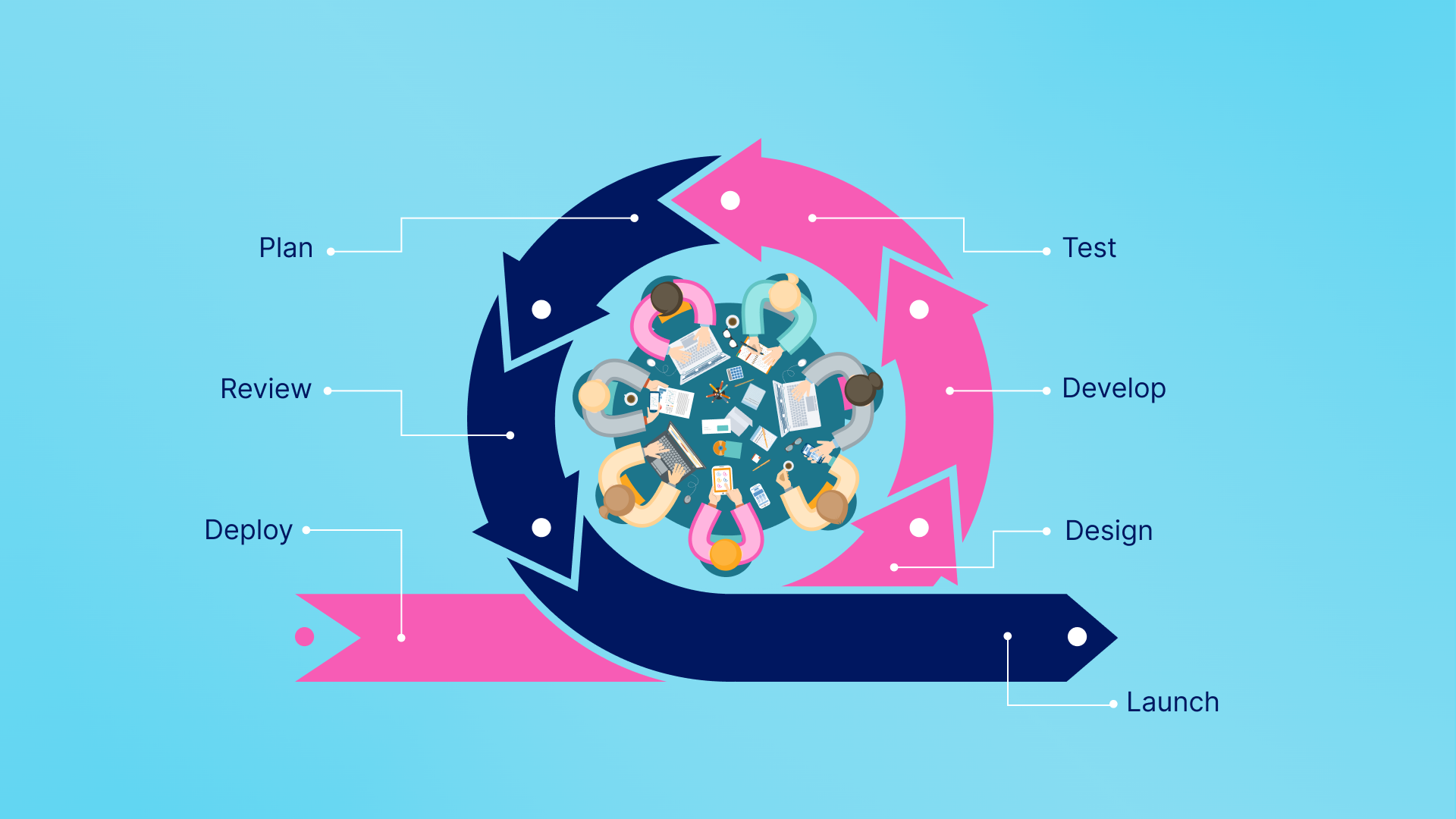There’s a variety of project management frameworks available today—Scrum, Kanban, Waterfall, Agile—each sounding like a buzzword or a technical jargon. However, scratch the surface and you’ll find that they all follow a baseline principle and typical application.
For instance, Waterfall is appropriate for well-defined projects where there is no need to maintain flexibility and adaptability. Similarly, Agile relies on breaking down larger projects into smaller, manageable entities to improve productivity. And so on.
We’re here to talk about what is Agile method and how you can apply it to project management. Let’s get started.
H2: What is Agile Methodology?

Agile methodology breaks projects into smaller, flexible phases called sprints. After each sprint, teams assess their work, identify areas for improvement, and adjust their plan for the next one. This iterative approach is central to Agile estimation techniques. It’s a strategic method that helps organizations boost efficiency, encourage innovation, and strengthen teamwork.
H2: Key Components of Agile Development
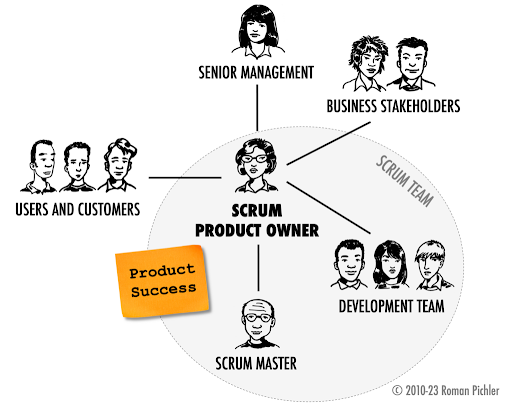
Here are the key Agile roles:
H3: Product Owner
The Product Owner is the individual accountable for the product’s success and ensuring its value is maximized.
H4: Responsibilities
- Setting the product vision and representing the interests of all stakeholders
- Maximizing product value and ensuring it delivers ROI
- Reporting progress and issues to stakeholders
- Accepting the final product at the end of a sprint or project.
H3: Scrum Master
The Scrum Master facilitates the Agile development process to ensure smooth communication and process management.
H4: Responsibilities
- Facilitating and enforcing the team’s Agile rituals and processes
- Removing any obstacles or roadblocks that hinder the team’s progress
- Committing to goals and timelines on behalf of the team
H3: Scrum Team
The Scrum Team is a cross-functional group responsible for the development and delivery of the product. This includes tasks like modeling, programming, testing, and releasing.
H4: Responsibilities
- Assisting the Scrum Master in prioritizing product backlog items and assigning tasks during sprint planning
- Self-organizing using the team’s backlogs and sprint boards
- Focusing on tasks that contribute to achieving sprint goals
Did You Know? Engineering and R&D teams form the largest segment of Agile practitioners.
H3: Agile Artifacts: Product Backlog, Sprint Backlog, and Increment
Artifacts refer to the information used by the scrum team and stakeholders to describe the product being developed along with actions needed to produce it. They include:
H4: Product Backlog
The Product Backlog, often a key component in an Agile project plan, is a prioritized list of all requirements for the product. It is maintained by the Product Owner. It evolves over time and is updated regularly, with the Product Owner responsible for ensuring its accuracy and relevance.
H4: Sprint Backlog
The Sprint Backlog is a subset of the Product Backlog that the Scrum Team selects to work on during a Sprint. It includes a list of tasks the team aims to complete within the Sprint, with each item broken down into smaller tasks. All items in the Sprint Backlog must be developed, tested, documented, and integrated to meet the Sprint’s goals.
H4: Product Increment
Product Increment is the most crucial artefact in Scrum. At the end of each Sprint, the team delivers a potentially shippable product increment (PSPI). The increment must meet the team’s “Definition of Done” and be accepted by the Product Owner. This makes sure that the Agile development cycle stays aligned with its goals.
H4: Program Increment (PI)
Program Increment (PI) refers to a time-boxed period during which incremental business value is delivered over several Sprints. It typically lasts between 8 to 12 weeks.
H3: Agile Events: Sprints, Stand-ups, Reviews, and Retrospectives
An Agile ceremony or event is a meeting in the Agile process where the team comes together to decide on the next steps and plan their actions. They are characterized by:
H4: Sprints
Sprints are short, time-boxed periods where the team works on specific tasks. They usually last 1-4 weeks, with a clear goal to deliver a working product increment.
H4: Stand-ups
Daily stand-ups are quick, 15-minute meetings where team members share progress and obstacles. It helps everyone stay aligned and address issues early.
H4: Reviews
Sprint reviews happen at the end of a sprint, showcasing the work completed. Stakeholders give feedback, ensuring the project is moving in the right direction.
H4: Retrospectives
Retrospectives are held after each sprint to reflect on the process. The team discusses what went well, what didn’t, and how they can improve in the next sprint.
H2: Agile Testing and Quality Assurance
Agile development follows a test-first approach, contrasting with the traditional method of testing at the end of the process. In Agile, testing and coding are done incrementally, allowing each feature to be progressively refined until it delivers enough value for release to production. The key benefits of Agile testing include saving both time and money. Since it incorporates regular feedback from end users, it helps mitigate a common issue in software development: building the wrong solution.
Did You Know? Almost three in five professionals are satisfied with business outcomes after embracing Agile methodologies.
H2: Agile Methodologies
The Agile framework encompasses various methodologies, each offering unique approaches. Below are two of the most popular Agile methodologies:
H3: Kanban
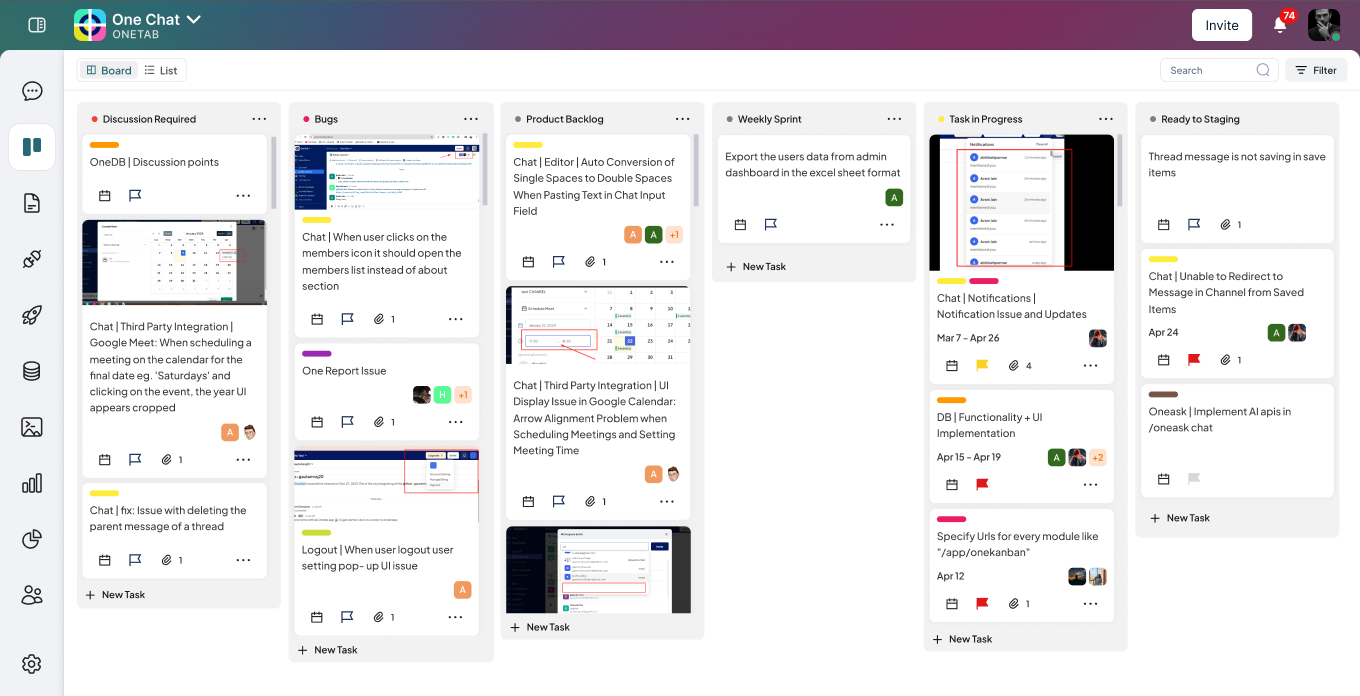
Kanban is a visual approach to managing Agile projects. Teams use digital Kanban boards to track the progress of tasks, which are represented as cards. These cards move across columns that represent different stages of development, starting from the backlog. This method helps teams identify bottlenecks and monitor the workload, providing a clear view of work in progress and completed tasks.
Further Reading: The Top Benefits of Kanban for Project Management
H3: Scrum
Scrum is an Agile framework for organizing and managing team work. It uses values, principles, and practices to guide teams. Inspired by rugby, Scrum encourages teams to learn through experience, self-organize around tasks, and reflect on wins and losses to improve continuously.
Further Reading: Kanban vs. Scrum: What’s the Difference?
H2: Building a Flexible Roadmap for Success
Creating an Agile project plan requires flexibility, clear goals, and a focus on continuous improvement. Here are actionable steps to build an effective roadmap, and how Onetab.ai helps:
H3: Setting Clear Goals and Objectives
A successful Agile product roadmap begins with well-defined goals and objectives. These goals should align with the product’s overall vision and address the needs and preferences of the target audience. Platforms like Onetab.ai allow development teams to set and track clear goals, allowing them to stay focused on high-priority tasks.
H3: Connect Goals to Initiatives
Initiatives, or themes, are the major bodies of work that support your strategy and help you achieve your goals. These initiatives are broken down into features and user stories and can often span multiple releases or epics. When your Agile team needs to pivot based on new data or customer feedback, ensure the new plan aligns with your initiatives before defining new features to pursue.
H3: Define Product Features
Use Onetab.ai’s task management tools to break down initiatives into features. Its Agile-friendly interface allows development teams to refine features into technical requirements and organize them into sprints. Populate your product strategy, goals, and initiatives on Onetab.ai and use this guide to prioritize features. It’ll help develop a cohesive product story for rapid iteration while staying adaptable.
H3: Gather Feedback
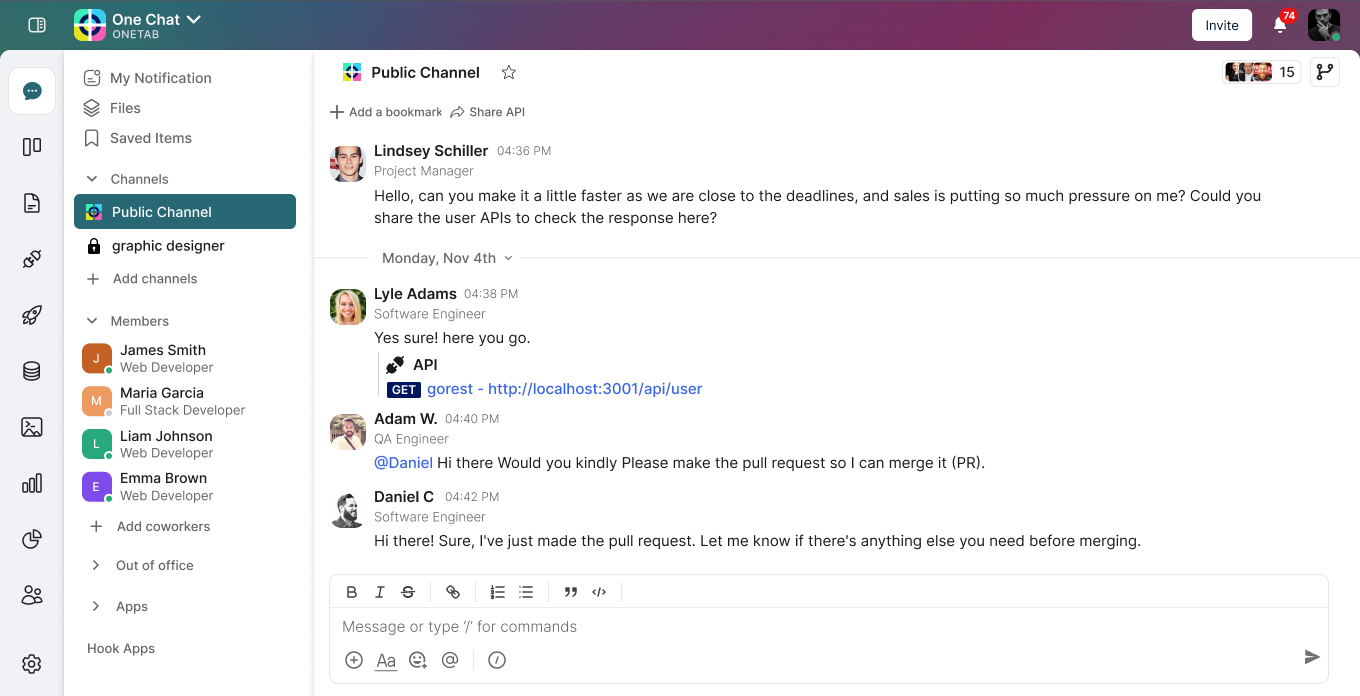
Use One Chat to collect instant feedback from key stakeholders
Before finalizing or sharing your roadmap, seek input from the broader cross-functional team. This step is essential for creating an Agile product roadmap that is accurate, thorough, and achievable. Gathering support also helps secure resources. Don’t forget your customers—Agile teams frequently gather ideas through user interviews, usability tests, and usage data to guide the roadmap. One Chat is a great way to stay in touch with the stakeholders and gather instant feedback.
H3: Plan your Product Releases
Onetab.ai comes with flexible release management capabilities for enabling development teams to group the features on the Agile roadmap into releases. It puts you in charge of your release cadence—daily, weekly, monthly, or quarterly—depending on project requirements. You can track every release in Onetab.ai for a smooth transition to development to delivery.
H3: Adapting to Change and Continuous Improvement
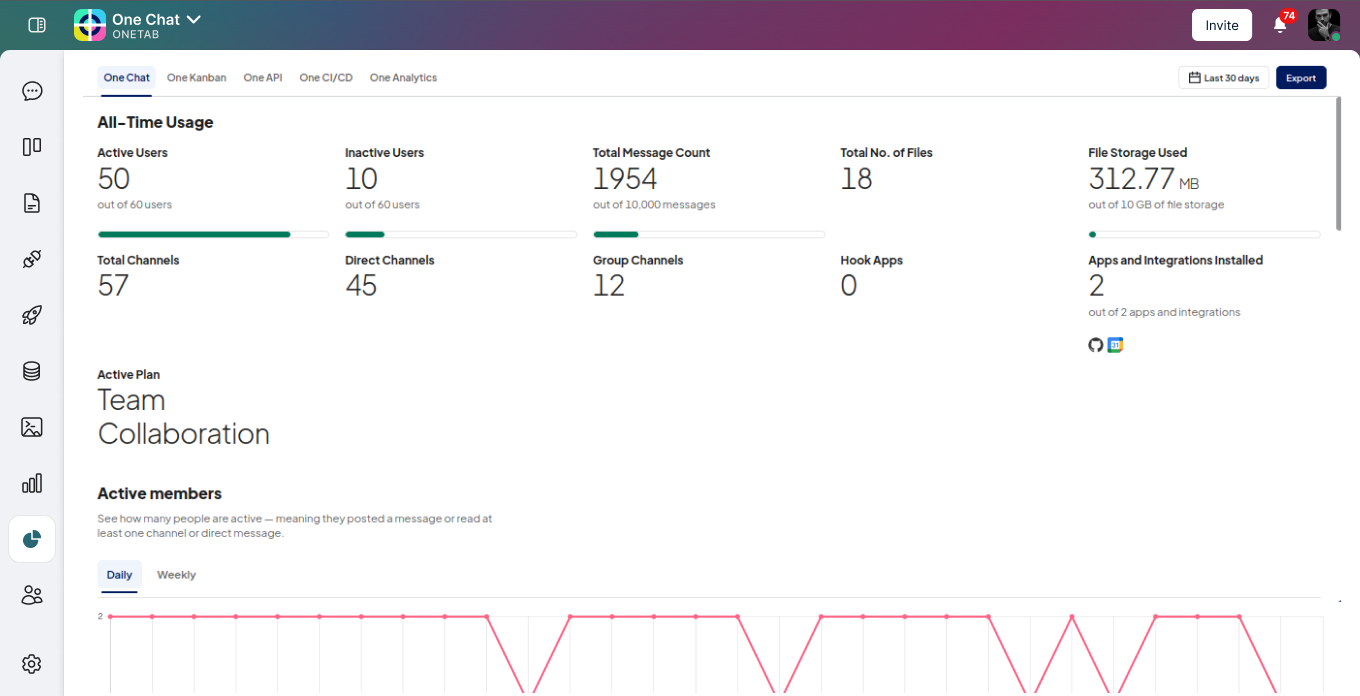
Visualize your team’s performance and activity using One Report
Agile projects thrive on adaptability. As needs evolve, so should your roadmap. Onetab.ai is as flexible as your requirements. Use it to track, review, and adjust goals to align with the micro and macro objectives. With Onetab.ai, development teams can embrace feedback, iterate, and stay responsive to market shifts, ensuring the product always meets user expectations.
H3: Conclusion: Embracing Agile for Project Success
To sum up, Agile methodology is all about building projects in manageable, adaptable increments. It emphasizes flexibility, stakeholder collaboration, and delivering value, making it suitable for businesses and projects that need to stay responsive to changing market conditions. Agile helps your team stay agile as they learn and adapt continually while delivering consistent, valuable outcomes to customers.
Ready to make your software development teams more Agile? Sign up for Onetab.ai today!
H3: FAQs
1. What is Agile method?
Agile is a project management approach that focuses on breaking down projects into smaller, manageable portions known as sprints or iterations. Every phase spans planning, execution, and review so that teams can adapt to changes and improve continuously based on feedback.
2. What is the main purpose of Agile?
The main purpose of Agile is to ensure that the project is completed on time and within budget, while improving the flexibility and responsiveness of project teams.
3. Who can benefit from using Agile?
Although Agile methodology is geared for software development teams, it also finds use in areas of product development, marketing, and operations.
4. What are some common challenges of implementing Agile?
The common challenges associated with Agile include:
- Obtaining stakeholder buy-in
- Managing scope changes
- Adapting to new workflows
- Maintaining robust collaboration
- Breaking down complex projects into sprints
